The most successful marketers have one thing in common.
They find a way to gain an edge over their competitors.
Marketers who can analyze the trends and prepare for the future have the best chances of setting their companies up for success.
You don’t want to be the last one to jump on the bandwagon.
We’ve taken the time to identify the top marketing trends for the year.
We want to share our insights with you so that you can apply these concepts to your business and start the new year on the right track.
Properly applying these trends to your marketing strategy will improve customer engagement.
You’ll also be able to acquire more customers this year.
Let’s dive right in. These are the top nine marketing trends for the year.
1. Live video streaming
Social media platforms paved the way for the live video trend.
Instead of using social media for posting pictures and videos, you now have the ability to stream live content.
Take a look at how marketing experts are expecting live video to rise over the next two years:
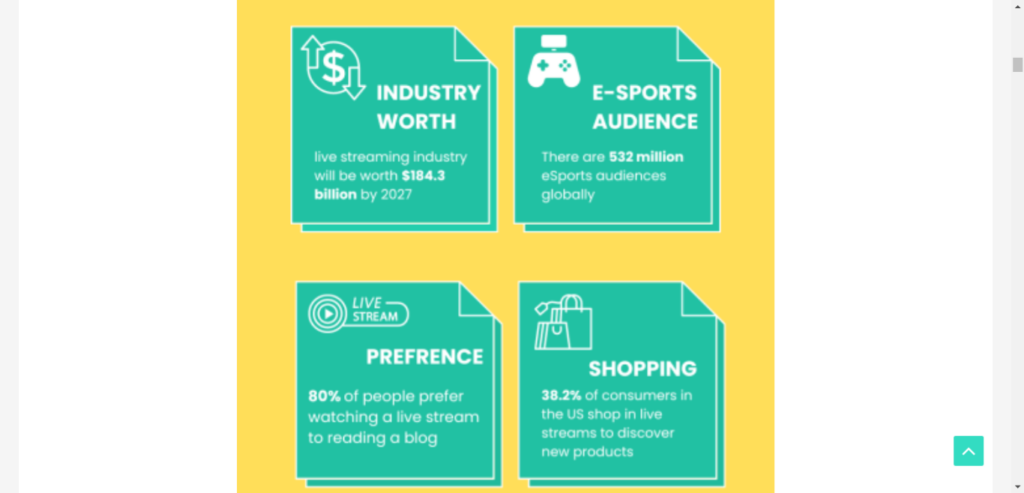
If you aren’t using live video to interact with your customers, it must be your priority soon.
Studies suggest that 80% of consumers prefer watching a live video from a brand instead of reading a blog.
And 67% of people are more likely to purchase a ticket to events like a concert after watching a live stream of a similar event.
Some of the most popular live video platforms include:
- YouTube live
- Twitch
- Facebook live
- TikTok
- Instagram live
- X (Twitter)
We like businesses that use live videos because it allows them to interact with their audience directly.
You’ll be able to communicate and get customer feedback in real-time.
Plus, it’s not like your live video is gone forever once you stop streaming.
You can save those videos and repurpose that content in the future.
2. Artificial intelligence (AI)
Artificial intelligence is firmly part of the marketing landscape now.
AI tools are used to analyze consumer behavior (one of AI’s numerous applications).
Once the behavior is analyzed, these robots can make decisions according to how they are programmed.
AI robots can start taking over some basic human roles, allowing your team to spend more time on assignments requiring human insight.
An example of AI you may be familiar with is a chatbot.
We’re sure you’ve been on a website where a customer service representative popped up to start an instant message conversation with you.
With artificial intelligence’s rising influence, marketing executives should consider utilizing this exciting and rapidly expanding industry.
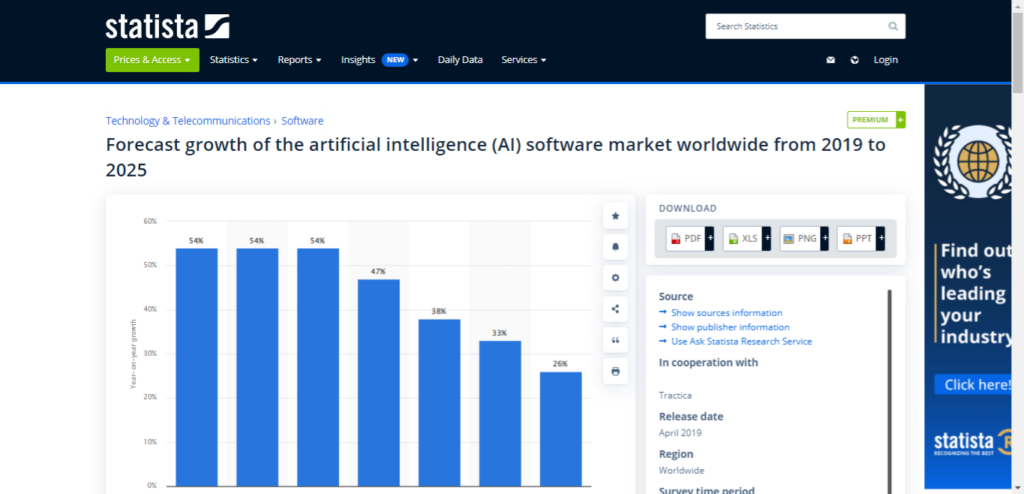
Now is the perfect time for you to educate yourself on using AI to improve different areas of your business.
It will give you an edge over your competitors who aren’t prepared.
3. Micro-influencers
We’re sure you’re familiar with brand ambassadors and social influencers.
These people on social media have relationships with companies and get paid to promote products on their personal profiles.
It’s a legitimate marketing strategy.
When it comes to social influencing, to be considered a celebrity, one has to have over 1 million followers.
People with 500k–1 million followers and 100k–500k followers fall into the macro influencer and middle influencer categories, respectively.
Micro-influencers have between 1k–100k followers on social media.
Brands are reaching out to these micro-influencers because it’s easier for people to relate to them.
Let’s be honest.
Not many people can connect with celebrities. Plus, it’s obvious when they’re promoting something on their profiles.
You may even have doubts that those celebrities use the products they’re pitching.
But it’s much easier for the average person to relate to a micro-influencer.
Why?
Well, for the most part, these people aren’t actually famous. They have normal jobs and live regular lives. But they happen to be popular on social media.
Take a look at how micro-influencers are perceived by consumers:
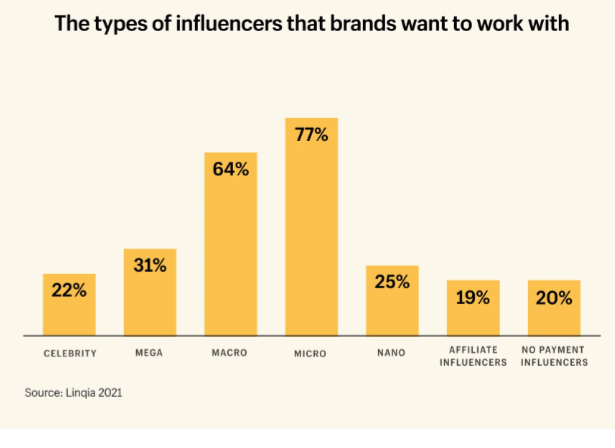
In this case, less is more.
Notice the difference in user engagement between influencers with 1k to 4k followers and influencers with over 100k followers.
Consider finding some micro-influencers to represent your company on social media.
Another benefit of this strategy is the cost.
A micro-influencer will likely cost you $172 for an Instagram post rising to $908 for a YouTube video:
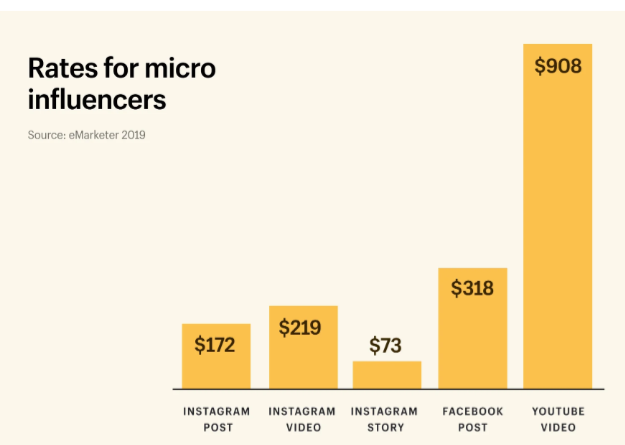
If your vertical includes products, you should send them free samples to demonstrate.
That’s another cost to consider, which is often why marketers tend to restrict their activities geographically to ringfence costs.
4. Content marketing
If you’ve had any marketing success over the past few years, we’re sure you’ve used content marketing strategies.
Content marketing is still trending upward.
82% of marketers report actively investing in content marketing, with a further 67% noting an increase in leads and sales.
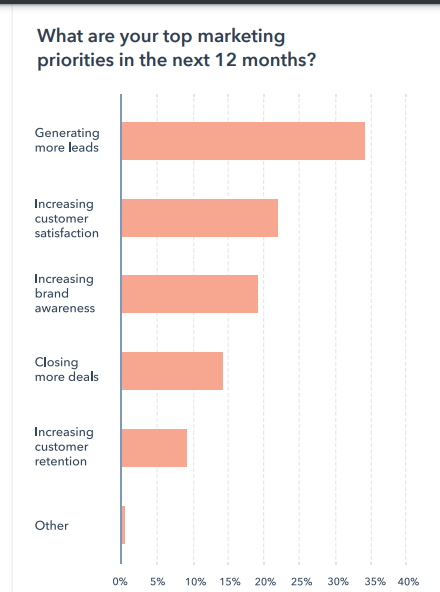
Refine your existing content marketing strategies rather than coming up with new content marketing strategies.
Make sure your content is relevant and has a clearly defined audience.
Content marketing is great because it’s typically not expensive.
When properly executing these strategies, you’ll also see more sales and increased customer loyalty.
5. Generation Z
It seems over the past several years, companies have been focusing on Millennials.
There’s nothing wrong with that.
It’s important to target consumers while they are young so you can try to retain them for as long as possible.
Every generation has different buying habits.
Millennials have helped shape the marketing trends over the last decade or so.
But now it’s time to put some more emphasis on younger generations as well.
Generation Z, also known as the iGeneration, Post-Millenials, or the Homeland Generation, were born in the late 1990s to mid-2000s.
The oldest people in this generation are entering their early 20s.
As they get ready to graduate from college, they’ll enter the workforce, which means their consumption habits will change.
A steady job means they will have more buying power.
Companies need to do more research on this generation and find out how to target them.
It doesn’t matter what industry your company is in.
Start to shift your focus toward Generation Z this year.
We’re not saying you should abandon your approach with Boomers, Millennials or Generation X, but recognize there is a fresh market for you to target.
Find out how they spend their free time. For example, look at how active Generation Z is in sports compared to the general population:

Although this study is from 2017, the context of how marketers can still apply it is valid today.
That said, you should also keep up with the latest trends.
Even if your company doesn’t make sporting equipment, you can still use this data for your marketing strategy.
You can focus your Generation Z marketing campaigns around physical activity or athleticism.
That’s just one example.
Do your research, and find out what Generation Z wants and how they consume information.
That’s the key to acquiring these consumers.
6. Consumer personalization
You need to give your customers a personalized shopping experience.
That’s one of the best ways to increase engagement and sales.
It’s what your customers want.
In fact, 48% of consumers prefer retailers that use personalization to improve their shopping experience.
Encourage people to create a customer profile on your website or mobile application.
That way, you can monitor their habits and give them special offers based on browsing patterns or previous purchases.
This is absolutely essential for companies who have an ecommerce website.
Personalization tactics make it easier for you to upsell and cross-sell to your customers.
Ultimately, this means you’ll make more money without spending much.
It’s cheaper to target your current customers than it is to acquire new ones.
You can also send personalized email messages to your subscribers.
Email personalization can increase open rates by 50%:
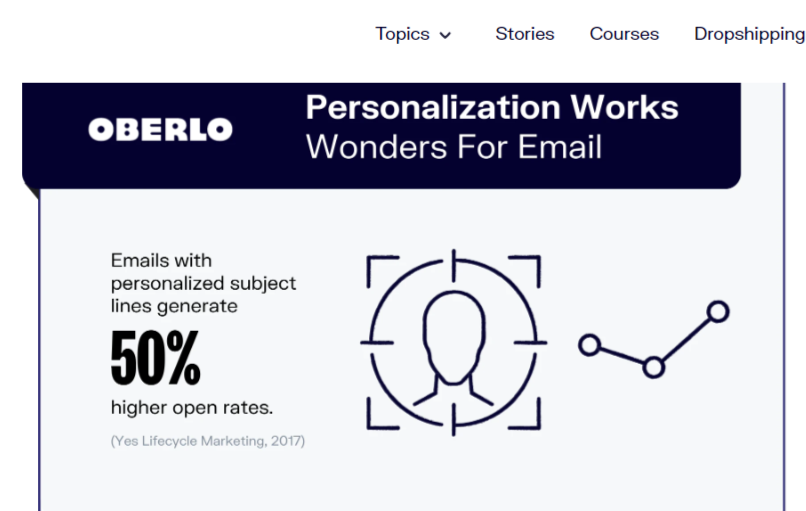
If you factor in the typical email open rate is 20.81%, then it’s clear that investing time in personalization represents a better return on investment (ROI).
Numbers like this are too good to ignore.
Those of you who weren’t using personalization yet must start doing so now.
7. Privacy protection is more important than ever
People are worried about their privacy.
Marketers need to start using privacy protection as a selling point.
Let your customers know how you are protecting their information.
Over 143 million Americans were affected by the Equifax breach in 2017.
That’s scary.
It’s especially scary since the company is a consumer credit reporting agency.
If your information isn’t safe with them, where is it safe?
This event has consumers on high alert.
They may be hesitant to enter their credit card information online, fearing they could become victims of credit card fraud.
How can you make consumers feel safe?
There are certain things you can do to add credibility to your website.
- Display all your security badges.
- Provide up-to-date contact information.
- Add customer reviews and testimonials.
- Make it easy to navigate.
- Have fast-loading pages.
- Ensure your checkout process is secure.
All of this will make customers feel safe when they’re shopping.
Getting lots of sales will be difficult if your company appears sketchy or untrustworthy online.
8. LinkedIn will continue to lead the way for B2B marketers
While B2C companies will have better luck using social media platforms and email marketing tactics to connect with their clients, B2B marketers should increase their LinkedIn presence.
Look at these numbers.
Over 82% of B2B marketers say LinkedIn is the most effective platform for lead generation.
LinkedIn should be the first place to look if you’re looking for new customers.
Connecting with a potential client on LinkedIn increases their chances of buying from you by 50%.
We expect these trends to continue.
Beef up your LinkedIn presence if your company operates on a B2B revenue model.
9. Interactivity
Your company needs to focus on interactivity, especially regarding email marketing.
Contrary to popular belief, email marketing is far from dead.
But you can’t just keep sending out the same boring emails over and over again and expect to get different results.
Interactive emails improve engagement with your subscribers.
Interactivity is also something marketers consider an important email marketing trend.
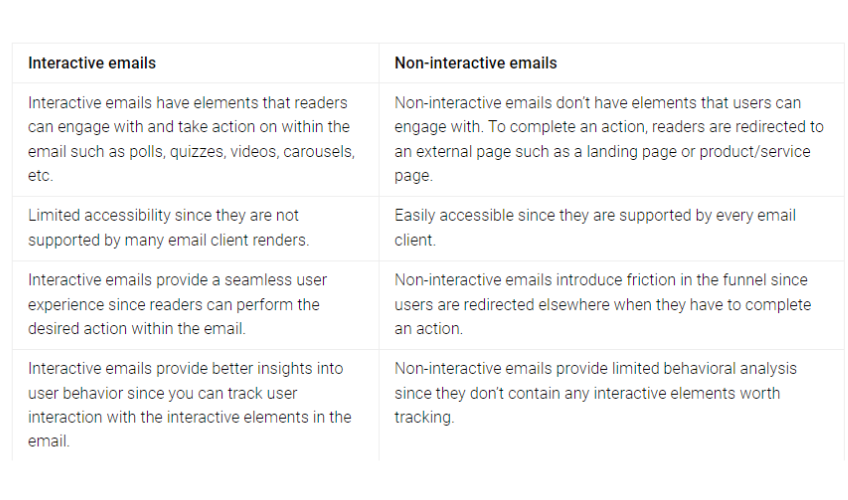
Here are some of the best ways to incorporate interactivity into your email marketing campaigns:
- Use real-time marketing.
- Add surveys, polls, and reviews.
- Include videos.
- Add menus for easy navigation.
- Use GIFs instead of pictures.
- add live shopping carts
If you saw success with interactivity tactics, continue to use it as part of your marketing strategy.
And if you haven’t tried them yet, it’s not too late to jump on board.
Conclusion
Staying current with the latest marketing trends is a recipe for success.
The best marketers look toward the future to predict consumer behavior.
If you can identify trends and make applicable changes to your marketing strategy, it will give you an edge over your competition.
After extensive research, we came to the conclusion the above trends will have a major impact on the success of your brand.
